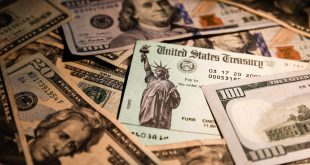The US dollar reached a 9-and-a-half month high against its counterparts on Friday, buoyed by concerns that the mutated delta strain of the Coronavirus may delay global economic recovery as central banks begin to roll back pandemic-era stimulus.
While moves in the currency markets were much calmer than on Thursday as equity markets stabilized, the risk-sensitive Australian and New Zealand dollars fell sharply again.
The dollar index, which tracks the performance of the US currency against a basket of six competing currencies, rose to 93.579. In the week, it is on track to achieve a gain of about one percent, the largest in two months.
The minutes of the Fed’s July meeting, published on Wednesday, revealed that officials largely expect to reduce the US central bank’s monthly purchases of bonds this year.
The euro rose 0.1 percent to $ 1.1682, but it is still trading near its lowest level in nine and a half months at 1.6655, which is recorded during the night. The euro is down nearly 1 percent for the week, the biggest decline since mid-June.
The Australian dollar fell to its lowest level in nine and a half months at $ 0.7115, down 0.4 percent, which puts it on the path to recording the worst weekly performance since September 2020, as the general isolation measures in Sydney to combat Covid-19 were extended for a month.
The New Zealand dollar fell to a new nine-month low at $0.6808. Today, the government extended a closure to combat the Coronavirus, which caused the central bank to postpone the increase in interest rates this week.
The Canadian dollar fell to a new six-month low at 1.2832 Canadian dollars per US dollar, in light of the decline in oil prices due to concerns about the global economy.
The British pound fell to its lowest level in a month against the dollar and the euro.
The yen, another safe-haven currency, slipped slightly against the dollar to 106.69.
The Chinese yuan fell to a three-week low of 6.51 per dollar in offshore trading, before trading down 0.1 percent at 6.505.
 Noor Trends News, Technical Analysis, Educational Tools and Recommendations
Noor Trends News, Technical Analysis, Educational Tools and Recommendations



